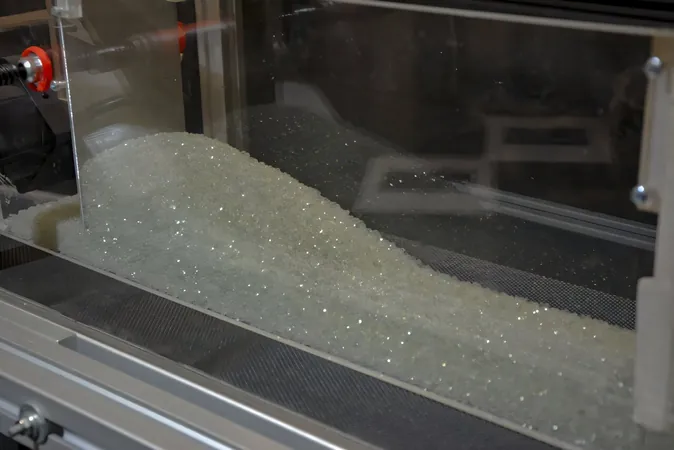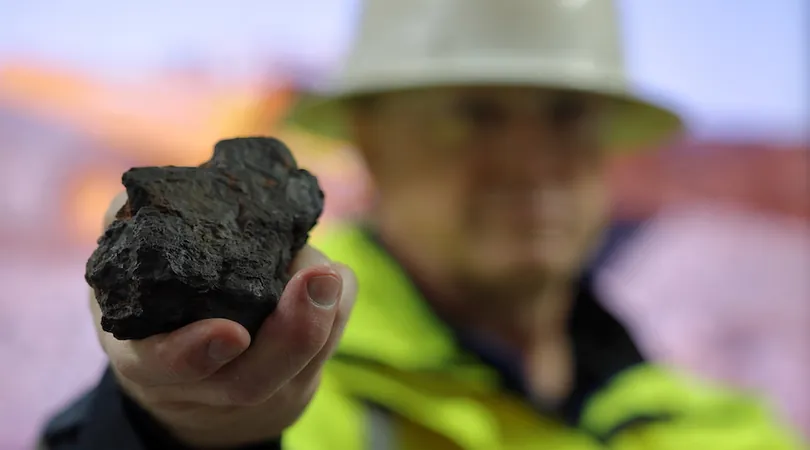
Scientists Unveil Hidden Swirls That Control the Flow of Sand, Snow, and Rocks
2025-08-30
Author: Michael
The Hidden Dynamics Beneath Our Feet
What seems like an ordinary flow of sand, rocks, or snow can mask an intricate dance of swirling currents operating beneath the surface. Researchers have long hypothesized that while grains may tumble down the steepest path during a landslide, secretive secondary flows can twist and turn sideways, influencing the speed and reach of these materials.
A Breakthrough in Observation
For the first time, scientists have captured these elusive secondary flows using cutting-edge X-ray imaging, marking a significant leap in our ability to study the mechanics of granular materials. In a groundbreaking study published in *Nature Communications*, advanced imaging techniques allowed researchers to visualize these hidden patterns in three dimensions with their innovative setup known as DynamiX.
The Power of the Experiment
The idea of secondary flows isn’t entirely new; earlier research relied on computer simulations and theoretical models to predict these movements. Actual observation, however, faced challenges, as most methods either altered the grain behavior or disrupted the flow. The team’s novel bulldozing experiment with glass beads showcased how a conveyor belt could simulate a natural buildup without interference.
Revealing the Swirling Currents
What the team discovered during their experiments were ripples on the surface, hinting at the presence of these hidden secondary flows. By mapping the behavior of grains both at the surface and within the heap, they found compelling evidence of movements that defy conventional understanding.
Implications for Science and Industry
While their work primarily focused on laboratory-based glass beads, the implications reach much further. These findings suggest that secondary flows are commonplace anytime particles are manipulated, whether clearing snow or processing grains in agriculture. Understanding these dynamics is crucial not only for predicting outcomes in natural disasters like landslides but also for advancing industrial applications such as pharmaceuticals and materials handling.
The Future of Granular Flow Research
This research lays essential groundwork for refining current models, which often overlook these subtle yet impactful flows. By integrating considerations of secondary motion, engineers and scientists can better predict the behavior of unstable materials, improving public safety in disaster-prone areas and optimizing industrial processes.
The swirls of movement beneath the surface of any flowing mass are pivotal to understanding everything from epic avalanches to day-to-day material logistics, illuminating a hidden world that is critical to both nature and industry.









 Brasil (PT)
Brasil (PT)
 Canada (EN)
Canada (EN)
 Chile (ES)
Chile (ES)
 Česko (CS)
Česko (CS)
 대한민국 (KO)
대한민국 (KO)
 España (ES)
España (ES)
 France (FR)
France (FR)
 Hong Kong (EN)
Hong Kong (EN)
 Italia (IT)
Italia (IT)
 日本 (JA)
日本 (JA)
 Magyarország (HU)
Magyarország (HU)
 Norge (NO)
Norge (NO)
 Polska (PL)
Polska (PL)
 Schweiz (DE)
Schweiz (DE)
 Singapore (EN)
Singapore (EN)
 Sverige (SV)
Sverige (SV)
 Suomi (FI)
Suomi (FI)
 Türkiye (TR)
Türkiye (TR)
 الإمارات العربية المتحدة (AR)
الإمارات العربية المتحدة (AR)